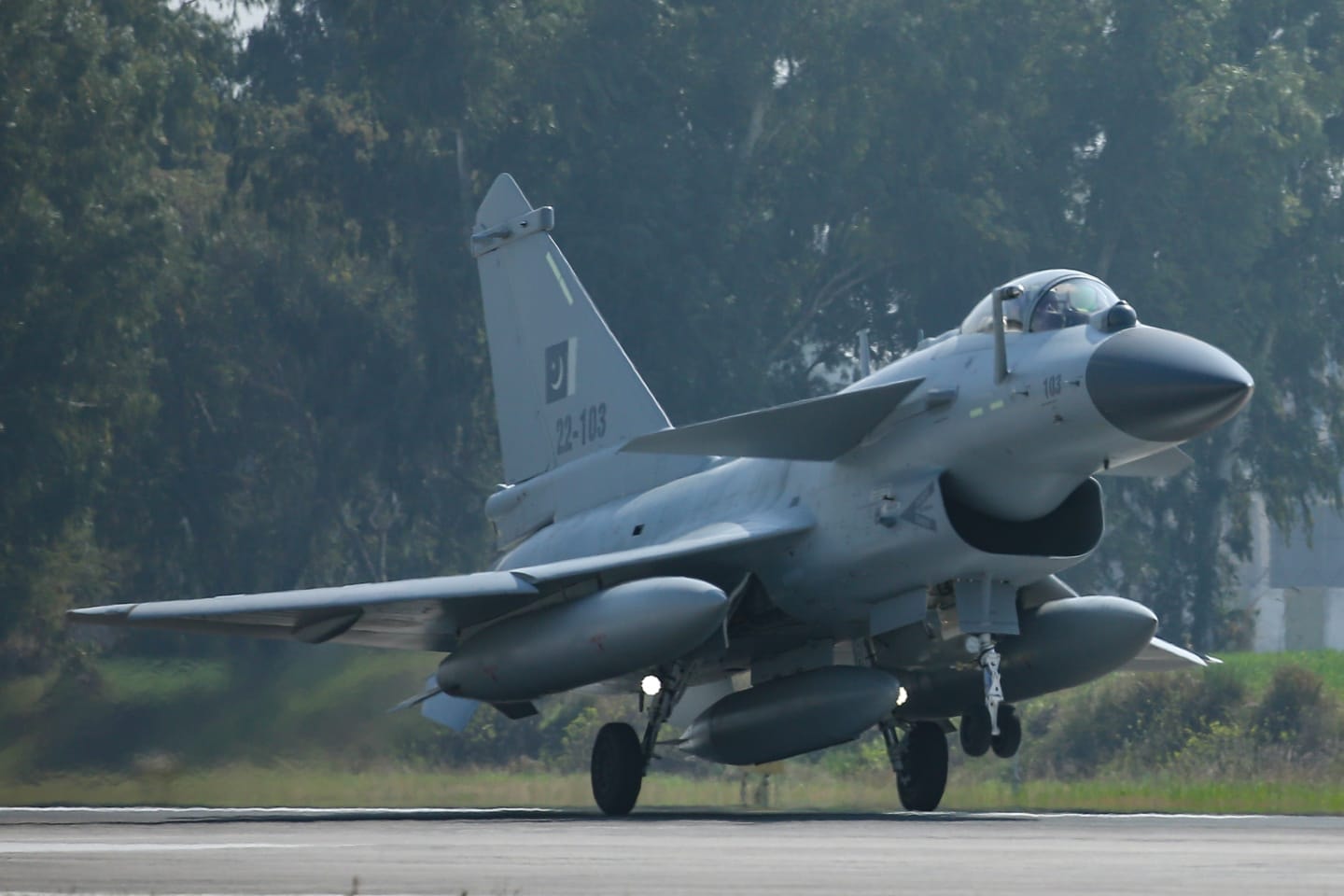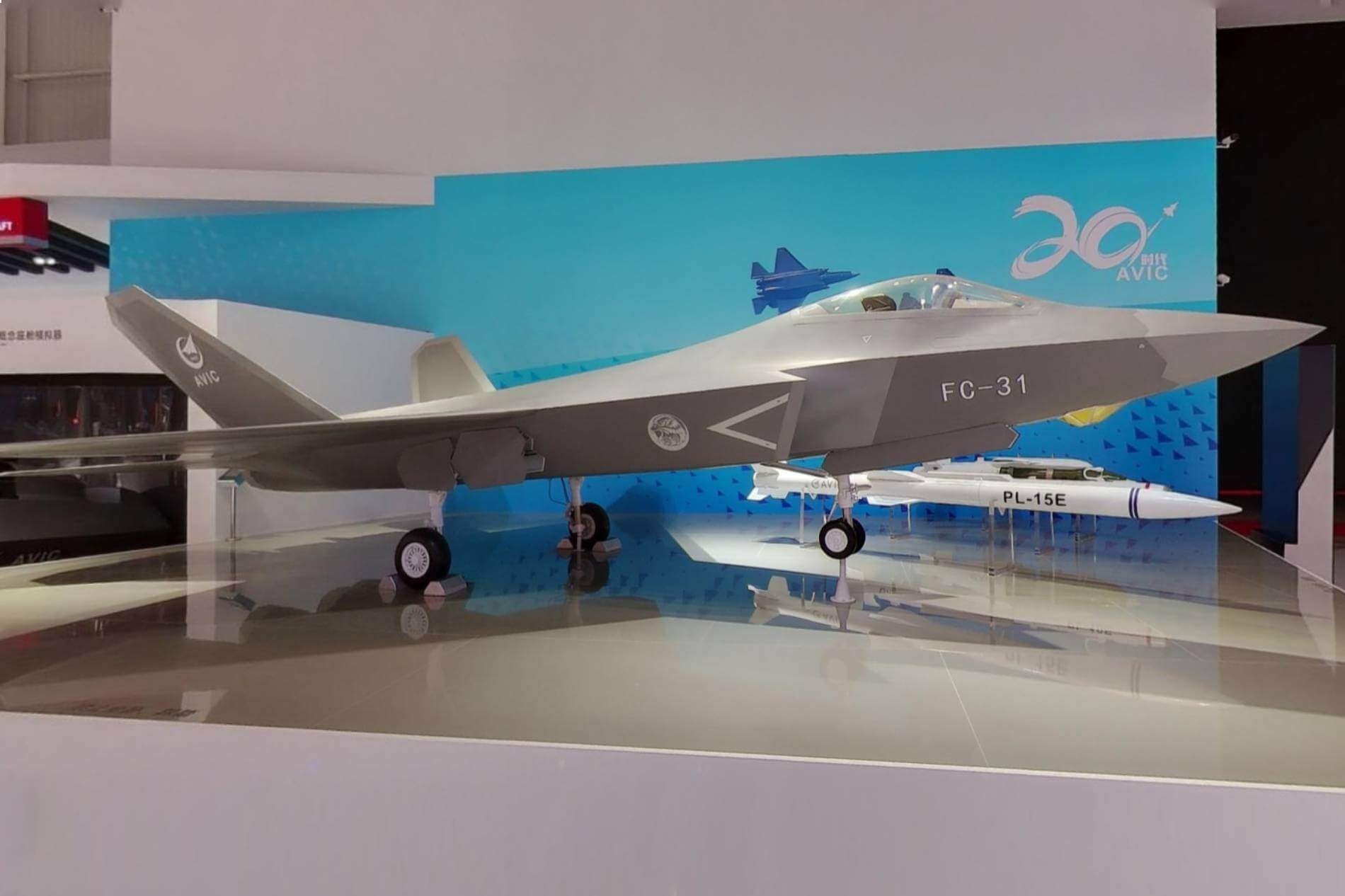Pakistan formalizes interest in Chinese J-31/FC-31 «Gyrfalcon» stealth fighter
The Pakistan Air Force (PAF) chief, during a ceremony, informed those present that the Chinese fifth-generation J-31/FC-31 «Gyrfalcon» fifth-generation fighter will be inducted in the near future.
During a ceremony at the airbase, Air Chief Marshal Zaheer Sidhu, chief of the Pakistan Air Force, gave an overview of the latest additions to the PAF’s arsenal, which includes Chinese 4.5-generation J-10C fighters, C-130H military transport aircraft, as well as Airbus-319, Boeing 737, Piper M-600 and Beechcraft King Air 350i transport aircraft. The Chief of the Air Staff also highlighted the latest additions of modern radars, unmanned aerial systems such as Bayraktar TB2 and Akinci (of Turkish origin) and the national Shahpar-II, along with swarm drones, marauding munitions and long-range delivery vehicles, which significantly strengthened the country’s air defense capabilities. But he also spoke of the future.
https://www.youtube.com/watch?v=aiO-aNfB8t4
The leap to the fifth generation
Just as the PAF became the first export customer for the J-10C «Vigorous Dragon», it is now also seeking to become the first foreign operator of the FC-31 «Gyrfalcon» (or export version of the J-35 for the Chinese Navy), the fifth-generation stealth fighter that seeks to compete in capabilities with the US F-35.
In the words of the PAF chief, «the groundwork has already been laid for the acquisition of the J-31 stealth fighter, which will be ready to join the PAF fleet in the near future«.
Just as the induction of the J-10C was the Pakistani response to the arrival of the Dassault Rafale in the Indian Air Force (IAF), the PAF is seeking to continue to maintain technological balance with its rival, which is developing its own fifth-generation fighter program, by adopting the Chinese FC-31.

Surprises and concerns
The recent announcement comes as something of a surprise since, in August 2023, it had been announced that Pakistan was close to signing an agreement to participate in the development of the Turkish fifth-generation KAAN fighter, which was to have flown for the first time on December 27, but was eventually postponed to an undefined date in the near future.

While the strategic partnership between Beijing and Islamabad is long-standing and enjoying good health, surely giving Pakistan access to the latest Chinese export warfare technology before anyone else, it is hard to believe that the FC-31 will be flying the PAF flag in the «near future» as the aircraft is not yet in production, nor is the J-35, the future centerpiece of the Fujian conventional take-off and landing carrier’s airborne air wing.
See also: The formidable Carrier Air Wing of China’s future Type-003 aircraft carrier
Update on Huitong‘s CMA-Blog:
“The latest video (September 2023) suggested that another J-35prototype (or the first J-31 prototype?) just conducted its maiden flight over Shenyang.“ https://t.co/enJuHgxyEG pic.twitter.com/h6dfa6twqo
— @Rupprecht_A (@RupprechtDeino) September 27, 2023
Images emerged in September 2023 of what could be a new prototype of the Chinese stealth aircraft, producing speculation on social networks that it could be another J-35 for the People’s Liberation Army Navy (PLAN), or perhaps a model adapted for ground operation, either the FC-31 for export, or the J-31, if adopted by the People’s Liberation Army Air Force (PLAAF), which so far did not show much interest in the model, concentrating on the production of the J-20. In any case, the FC-31/J-31 that the PAF expects to incorporate in the medium plane, seems to be still quite green.
PS: It is striking that Air Chief Marshal Zaheer Sidhu (as is also the case in official Pakistani publications) uses the Chinese designations J-10C and J-31, instead of FC-20/J-10CE or FC-31 for export models, which could indicate that Pakistan does not receive «downgraded» aircraft for foreign customers, but instead aircrafts that are at the same technological level and have almost the same capabilities as those used by the PLAAF itself. Or it could just be a lax use of terms for propaganda purposes.

/https://aviacionlinecdn.eleco.com.ar/media/2020/09/Shenyang-J-31-2014.jpg)
Para comentar, debés estar registradoPor favor, iniciá sesión